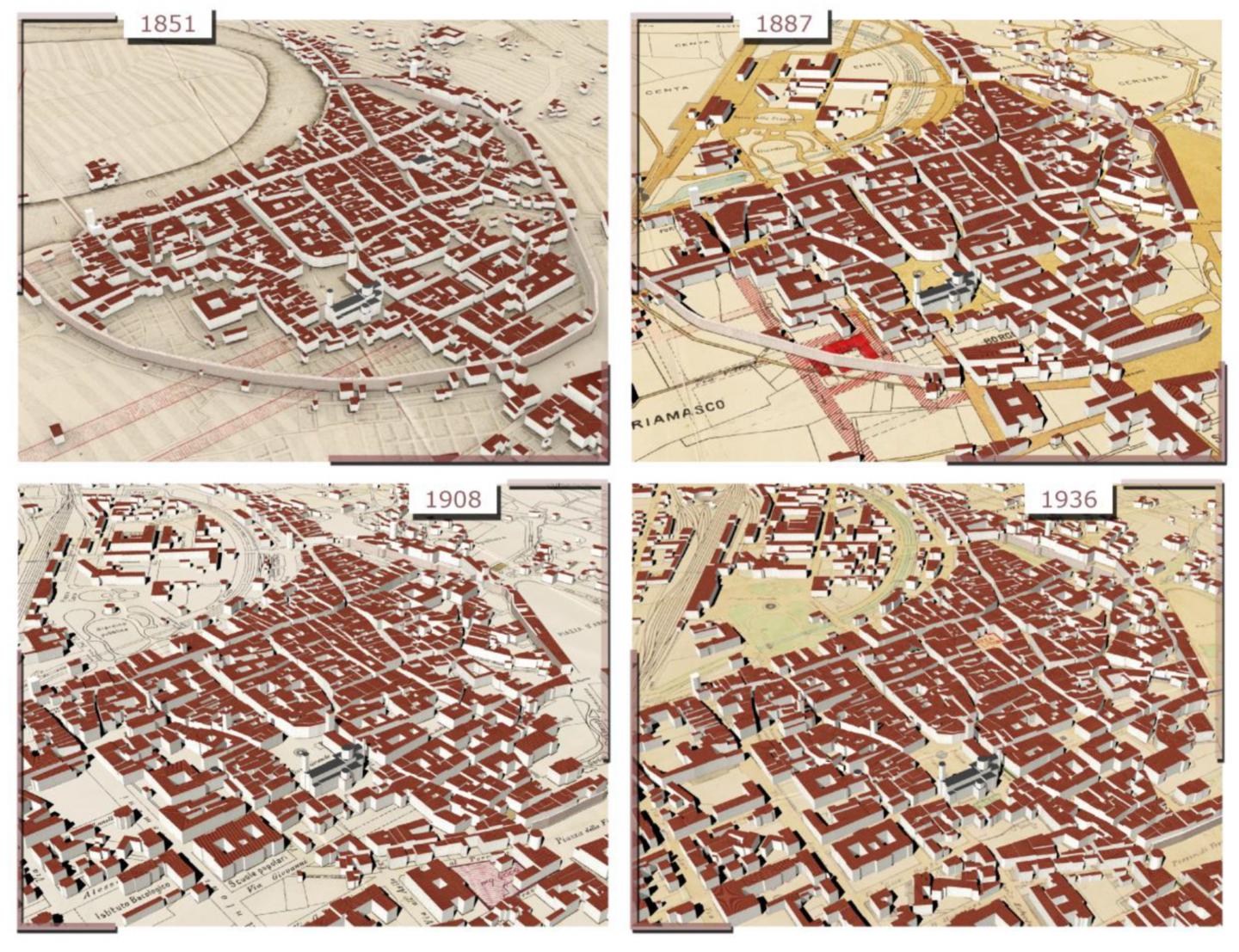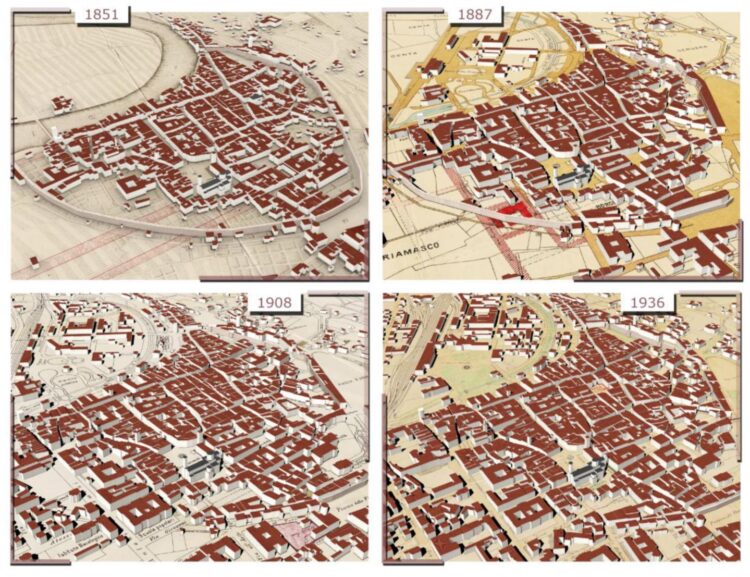
Credit: Farella E.M, et al./ MDPI Applied Sciences
A research team from Skoltech and FBK (Italy) presented a methodology to derive 4D building models using historical maps and machine learning. The implemented method relies on the geometric, neighbourhood, and categorical attributes to predict building heights. The method is useful for understanding urban phenomena and changes contributing to defining our cities’ actual shapes. The results were published in the MDPI Applied Sciences journal.
Historical maps are the most powerful source used to analyze changes in urban development. Nevertheless, maps represent the 3D world in the 2D space, which describes the main features of the urban environment but fails to incorporate other spatial information, such as building heights. In 3D/4D city modeling applications based on historical data, the lack of building heights is a major obstacle for accurate space representation, analysis, visualization, or simulations.
Scientists from Skoltech and 3DOM research unit of FBK Trento explored machine learning solutions for inferring building heights from historical maps.
Their method tested on four historical maps of Trento (years 1851, 1887, 1908, and 1936) and Bologna (years 1884 and 1945), reflecting the biggest changes in the urban structures over the last centuries, helped reconstruct multi-temporal (4D) versions of these cities.
“The implemented learning and predictive procedures tested on historical data have proven to be effective and promising for many other applications. Based on a few attributes for the prediction, it will soon be expanded to diverse real-life contexts with missing elevation data. The resulting models will be a great help in bridging the geospatial knowledge gap in past or remote situations,” Emre Ozdemir, a Skoltech and FBK Trento PhD student, explains.
###
Media Contact
Ilyana Zolotareva
[email protected]
Original Source
https:/
Related Journal Article
http://dx.





